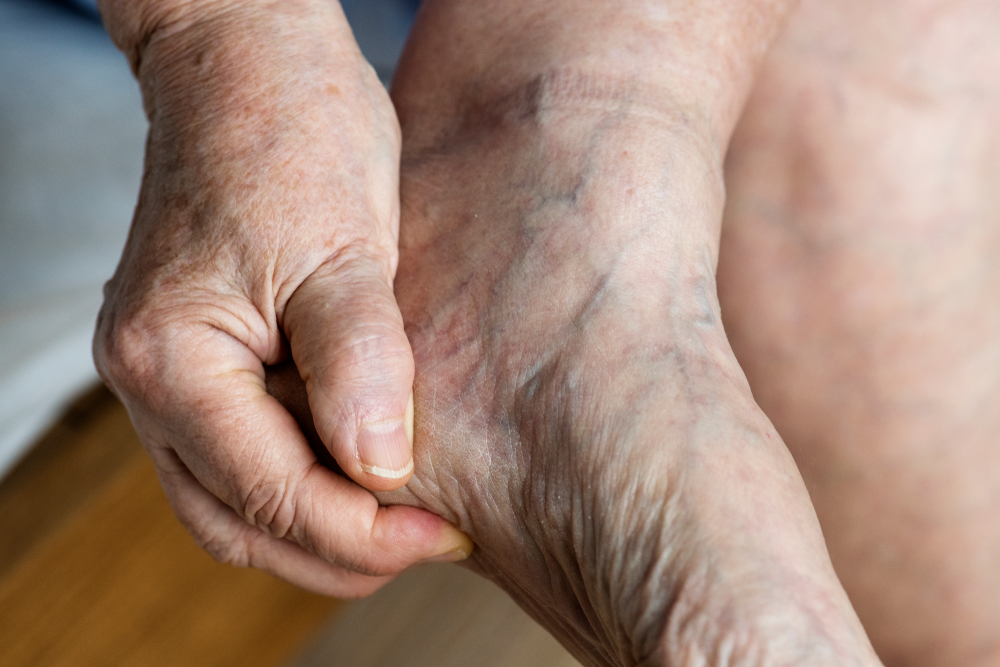Veterans Service Connection For Bone Spurs

Bone spurs can be an excruciating condition, significantly impacting a person's quality of life. Many veterans develop this condition due to military service and can be eligible for VA disability benefits. In this section, we'll explore the process of establishing a service connection and the VA disability rating criteria for bone spurs.
Proving Service Connection For Your Bone Spurs
Veterans seeking service connection for bone spurs should complete and submit VA Form 21-526, titled "Application for Disability Compensation and Related Compensation Benefits."
It can be done through various means, such as online submission via the eBenefits platform, mailing the form, visiting the nearest VA Regional Office in person, or seeking assistance from an accredited legal representative.
When filing a service connection claim, veterans must provide:
- A current diagnosis of bone spurs
- Evidence of an in-service event or stressor that caused or aggravated the condition
- A nexus letter that establishes a direct link between the veteran's bone spurs and their military service
It's important to note that veterans can also receive VA secondary service connection for bone spurs if they are associated with another condition, like osteoarthritis. To qualify for secondary service connection, the veteran's bone spurs must be caused or aggravated by another disease. To demonstrate this, veterans should establish a service connection for their primary condition (the one responsible for their bone spurs) and then submit the evidence.
Veterans can use the same VA Form 21-526 to apply for secondary service connection, streamlining the process for their benefit claims.
Bone Spurs VA Disability Rating Criteria
Bone spurs do not have a specific diagnostic code for rating purposes within the VA rating schedule. Instead, they are rated analogously. Analogous ratings are applied to conditions not explicitly listed in the VASRD (Schedule for Rating Disabilities). These ratings are determined based on the condition that most closely resembles the overall symptoms and treatment of the disability the VA is evaluating.
For instance, bone spurs may be rated under Diagnostic Code 5279, typically used for rating conditions like metatarsalgia or Morton's Disease. Under this diagnostic code, regardless of whether the spurs affect one or both feet, the highest rating a veteran can receive is 10%.
If your bone spurs are in your spine, VA may rate your condition as analogous to back pain.
VA Compensation and Pension Exams
Upon submitting a disability claim, the VA may request that veterans undergo a Compensation and Pension (C&P) exam. These examinations serve dual purposes: to establish the link between your condition and military service and to gather the necessary evidence for determining a disability rating if a service connection is granted.
Healthcare professionals contracted by the VA typically conduct C&P exams. During this comprehensive examination, the examiner employs various techniques to assess your condition thoroughly. These may include using X-rays to examine bone spurs and explore potential associations with other conditions, such as osteoporosis.
Furthermore, the examiner will engage you in a conversation about your condition, its symptoms, and your experiences during your military service. For instance, if you believe your bone spurs developed due to an improperly healed foot injury, the examiner may inquire about specific details regarding that injury. Therefore, it is essential to be well-prepared for the exam, as it offers a critical opportunity to discuss both your military service history and your medical condition.
Attendance at your scheduled C&P exam is paramount. Failure to attend can result in the denial of your claim, potentially hindering your access to the benefits you deserve. If you encounter scheduling conflicts or realize you missed an exam, it is crucial to contact the VA promptly. It enables you to explore the possibility of rescheduling the examination, ensuring your claim receives the consideration it merits.

